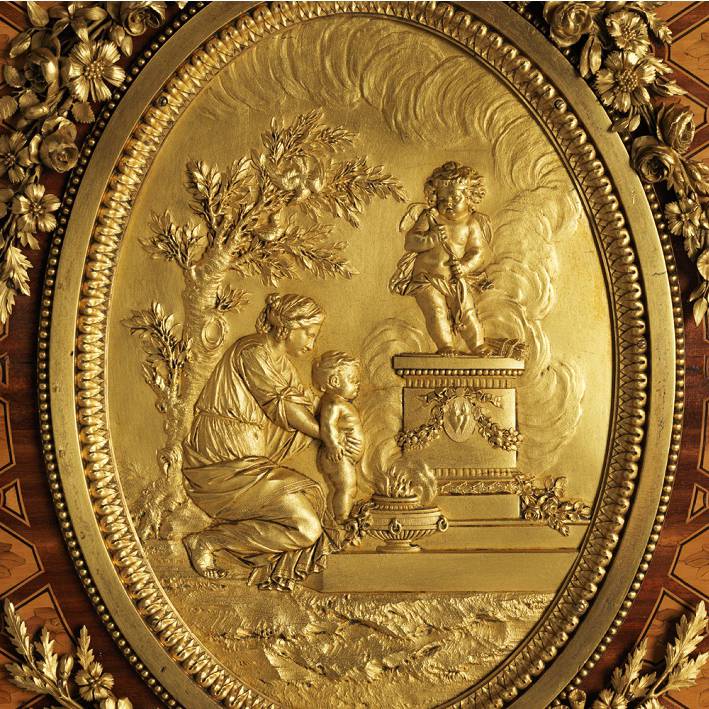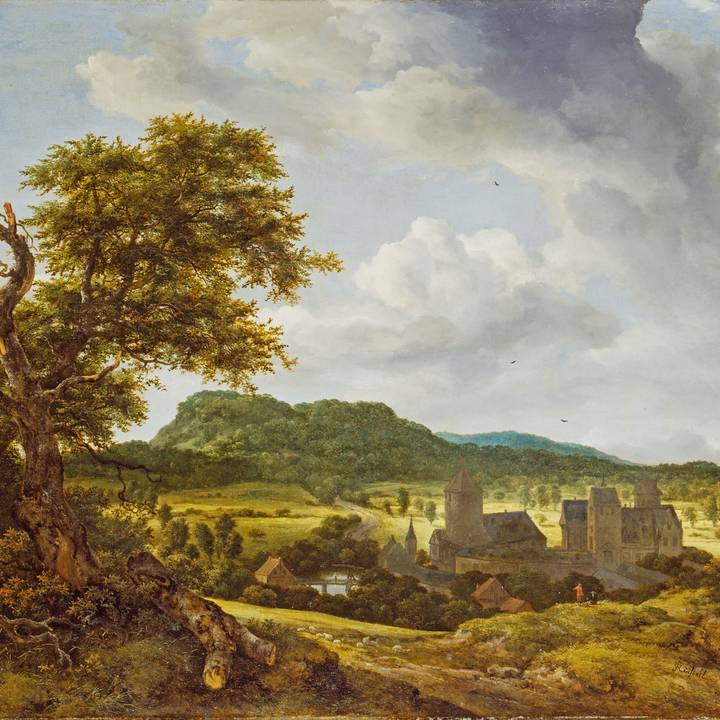Meet the Expert: 'All Glass Hybrids' in the Wallace Collection
Many of the Venetian and Venetian-style (façon de Venise) glasses in the Wallace Collection were acquired by Sir Richard Wallace from the comte de Nieuwerkerke in Paris in 1871. Nieuwerkerke gave Wallace the receipts from his acquisitions, which are in the Wallace Collection Archive. They show that Nieuwerkerke formed much of his collection in the late 1860s, when the demand for historic Venetian glass was very high. In the later nineteenth century high demand and dwindling supply enabled dealers to pass on to collectors glasses that are not quite what they seem.
Examination of five glasses in the Wallace Collection has revealed that they are ‘all glass hybrids’, a term coined by Juanita Navarro, the conservator who discovered and researched these glasses, to describe ‘a glass object that has been repaired or altered with glass that did not belong to it originally’. Some were produced to salvage damaged historic glasses for the market and sold to unsuspecting collectors. Others may have been made as innocent repairs at a collector’s request, or knowingly bought by a collector who was happy to include them in a crowded display.
- Suzanne Higgott, Curator of Glass, Limoges Painted Enamels, Earthenware and Early Furniture
Vase, Venice or ‘façon de Venise’ glass, late 16th–first half 17th century (C540)
This two-handled vase was made in Venice or elsewhere in the Venetian style in the late sixteenth or earlier seventeenth century. The model was popular and survives in a range of colours and techniques. One handle is a nineteenth-century replacement. It is more crudely worked and taller than the other.
A chip at the top of the join where the replacement is attached to the vase indicates that the original handle was damaged. Grinding marks at the ends of the replacement are visible at the points where it is bonded to the vase. The receipt for the glass makes no reference to the fact that it is a hybrid.
Take a closer look
Goblet, Venice or 'façon de Venise' glass, second half of the 17th century (C553)
This diamond-point engraved goblet was made in Venice or elsewhere in the Venetian style in the second half of the seventeenth century. There are many examples of this rather crude style of engraved decoration depicting floral motifs and birds on glasses of this period. The original, colourless stem of this glass must have been damaged below the first hollow knop under the bowl. It was replaced with the blue stem and integral colourless foot from another glass of the period.
The surfaces to be joined have straight, ground edges. Before the two parts were joined with adhesive, the original knop below the bowl was painted inside, probably blue, to match the knops of the replacement stem. With time, the paint became discoloured, appearing green. Whereas stems of this type usually have four or five knops, this hybrid glass has six. In 2001 the decision was taken to replace the old, weak adhesive at the join. A soft adhesive was applied externally around the join, which may be removed, if necessary, at a later date without disturbing the paint, as the latter is an important milestone in the history of the goblet.
TAKE A CLOSER LOOK
Cruet, Venice, second half of the 17th–early 18th century (C555)
Small cruets like this were produced in large numbers in Venice between the second half of the seventeenth and the early eighteenth centuries. They were often used in pairs for wine and water for the mass or in a secular context for wine or oil and vinegar. They were also used in pharmacies and for preparing and dispensing perfumes. The foot on this example is a replacement.
The adhesive from the original creation of this hybrid glass had become weak and the two parts of the glass came apart in 1981, revealing that the two surfaces at the join had been ground down and were not well matched. The current adhesive, applied in 1981, is excessive but remains in good condition.
Take a closer look
Cruet, Venice, late 17th–18th century (C559)
Here, the original cruet was made in Venice in the late seventeenth to eighteenth century. By 1865, when Nieuwerkerke bought it, the glass had become an elaborate all glass hybrid, with four components added from other vessels: the foot and the blue ring above the foot; the spout; and the mask prunt on the spout. To add the replacement foot a blue ring and a foot with a short stem section still attached were ground to size.
The inner surface of the hollow knop, which is open at the base, was painted with bronze powder paint (now degraded) to suggest gilding. Putty was introduced. The ground stem section was inserted into the knop and secured by the putty. The original upper part of the spout must have broken above the straight edge, which was ground where the original and replacement sections are joined. The back of the mask head was ground and the mask bonded to the spout to distract the eye from the join.
Take a closer look
Ewer, Venice, Italy, late 16th century (C530)
This ewer, made in late sixteenth-century Venice, exemplifies the high standard to which all glass hybrids could be made. The foot and the colourless disk above it (the merese) are replacements, the rest of the glass is original. Under magnification, a tiny ground area visible under the hollow knop revealed the hybrid status of this glass.
The join was achieved by the following process: Grinding the lower edge of the knop, which is open at the base, to achieve a flat edge; grinding the top of the replacement foot above the merese to create a short central stump; inserting the stump into the knop in a tight fit that only required a small amount of adhesive on the vertical sides, easily hidden by the vetro a retorti pattern of white canes on the glass.



















